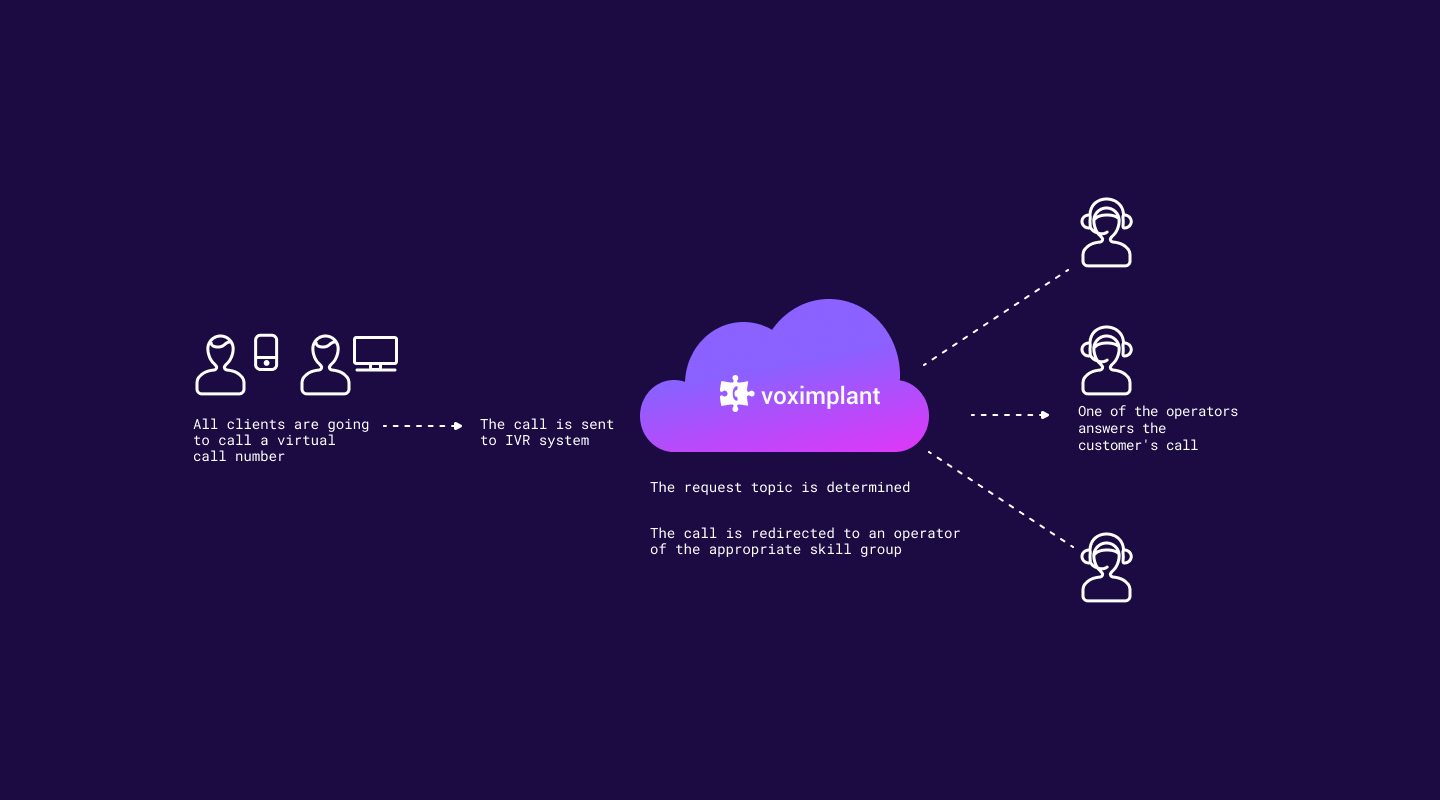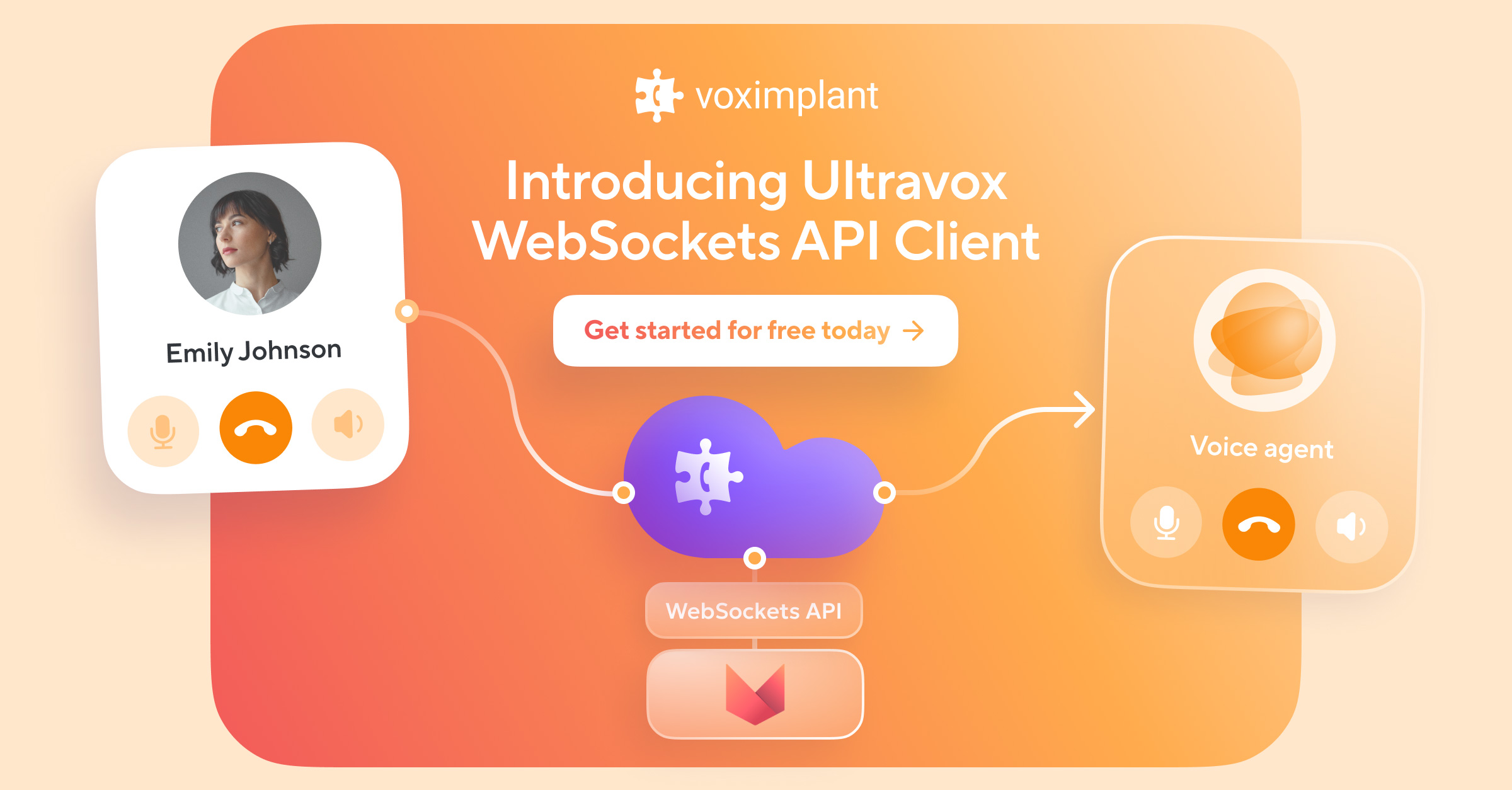Interactive voice response (IVR) systems are meant to make customer calls more efficient—but sometimes they get in the way.
If an IVR self-service menu is short, customers may not be able to find the answers they need. In response, they may try to bypass the system to speak to a live agent—which isn’t helpful if your goal is to automate your inbound calls.
You might work around the problem by creating longer IVR menus to help customers find answers to their queries. But that also doesn’t help because longer menus keep callers on the phone for a while—leading to frustrating customer experiences.
The good news is that all IVRs aren’t created equal. IVRs have the capabilities to be so much better—and by better, we mean smarter.
IVRs aren’t just about giving customers the ability to resolve issues by themselves. Advanced IVR technology gives you the opportunity to optimize your call center efficiency while offering consistent and incredible customer service on every call.
1. Conversational IVR with Voicebots
When calling a business, you’ve probably experienced a seemingly endless self-service menu that doesn’t lead to an answer to your question. You don’t want your customers to have this annoying experience while engaging with your IVR system.
To get customers the answers they need faster, update your current IVR by adding voicebots. They exponentially increase self-service menu options for callers and get them the answers they need faster.
Voicebots allow callers to speak to and be understood by an IVR system in a normal speaking voice. This eliminates the need for callers to navigate an IVR menu with keypad inputs. Voicebots also respond to callers in human-like voices, which makes each interaction feel more personal.
Voicebots are powered by conversational artificial intelligence (AI). You’re likely already familiar with voicebot technology if you’ve ever interacted with a voice assistant like Siri, Alexa, or Google Home.
Here’s a breakdown of how a call with an IVR voicebot works:
- The caller tells the IVR voicebot the reason they’re calling.
- The voicebot listens to the caller’s request via automatic speech recognition (ASR) and processes what the caller said through natural language processing (NLP). At this point, the voicebot transcribes the audio input received into text.
- Through an NLP management platform like Google’s Dialogflow, the voicebot creates a response (in the form of a raw text file) to the audio input (the customer’s request) it received.
- To respond in a human-like voice, the bot uses AI deep-learning techniques to synthesize speech from the generated raw text files, and the caller hears a response to their inquiry.

Transnational bank Sberbank built its voice assistant, Anna, to manage customer calls solely through an IVR. Voximplant’s speech recognition and analysis technology helps the IVR learn what a caller needs in order to accurately distribute the call to the right department. The average Sberbank customer spends less than 70 seconds on a call with the company’s Voximplant-built Anna bot—equating to both agents and customers spending 4x less time on calls.
You have a vast amount of customization options when you build your IVR voicebot with Voximplant.
When customers call your business, you can process their speech input in real time and set specific parameters to ensure your IVR is as accurate as possible. Our platform’s phrase hints mode allows the ASR feature to match a caller’s speech input to a selected list of frequently used phrases, increasing the probability that the caller’s intent is accurately recognized. There’s also voice activity detection that filters out background noise so your IVR picks up what the caller is saying and not random noises in their space.
We also make it easy for companies to communicate with customers in different parts of the world. Our advanced speech-to-text processing doesn’t limit you to just a handful of languages. You can process up to 60 distinct languages and dialects with our ASR technology. You can also use external speech recognition providers through WebSocket.
Learn how to build your own voicebot with Voximplant here.
2. Match customers to the right agents with skills-based routing
When a customer calls, you want to match them with the agent who is most likely to have the answer they need. That’s where smart, skills-based routing comes in.
First, an IVR system answers a call, receives audio input, and determines what the caller needs. Then, it uses automatic call distribution to either allow the caller to continue on through the self-service menu or forward the caller to a live agent based on the rep’s skillset and level of expertise. There are a wide array of agent skillsets that can be accounted for in your IVR’s skills-based routing:
- Language. Your smart IVR can route calls to an agent proficient in the customer’s language. This feature makes the interaction smoother for your customer.
- Technical knowledge. A smart IVR system can gauge the complexity of a customer issue, so it knows which tier of technical support it should connect the customer with.
- Agent availability. Say a customer tries to reach a live agent at 4 a.m. EST. The smart IVR won’t be able to connect with a snoozing East Coast agent, but it can route the caller to a London agent who is just starting their morning. This feature lets you provide 24/7 customer service if your support team works across time zones.
- Product familiarity. If callers are typically interested in specific products, you might set up an IVR system that connects them with agents who specialize in those items.
Automotive classified company Auto.ru turned to skills-based routing when potential buyers were unable to reach appropriate sales agents.
Before using a smart IVR for call distribution, Auto.ru was missing 20% of its incoming calls. The company decided to configure a smart IVR system that would transfer incoming calls to the IVR if a sales agent missed a call twice. Once connected with the smart IVR, the caller is given the option to speak with another sales agent selling a similar vehicle.
Auto.ru is now able to provide round-the-clock service to buyers, and no calls are left unanswered. All missed calls are routed to their IVR.
Setting up skills-based routing is easy with Voximplant’s drag-and-drop visual editor.
You can create various call scenarios and assign multiple skills to each agent. You can also set each agent’s skill level between 1 and 5 so that your most experienced agents receive your customers’ more complex cases.
3. IVR and CRM Integrations use Data for Personalized Calls
The first step to providing personalized service is getting to know your customers. What’s the best way to learn more about your customers? Data collection. By integrating your IVR with a customer relationship management (CRM) software, you can collect customer data and tailor your calling experience to meet their needs.
Your agents can use this CRM-IVR integration to authenticate or verify a caller’s account information, view their purchase history, and have visibility into the caller’s former interactions with customer support. This access into customer data increases the accuracy of skills-based routing.
In Voximplant’s CRM integrations, the IVR receives input from the caller and uses it to look up additional information within the CRM. It then uses data retrieved from the CRM to make the best customer-agent match when forwarding the call.
Voximplant offers direct integrations with CRM systems like Zoho. Our engineers can also work with you to integrate our platform with your company’s CRM—such was the case with Singapore-based travel consultancy 12Go.
With the IVR and CRM integration, 12Go wanted to automate both inbound and outbound calls and provide agents access to historical customer data and new, real-time customer data. Leveraging the flexibility of Voximplant’s tools, our engineers connected our platform with 12Go’s CRM.
Since the integration, 12Go’s IVR processes over 500 calls every week and has experienced zero lost calls. The consultancy’s agents now have the necessary tools to provide personalized, valuable assistance to their customers.
4. Integrate your IVR across channels with omnichannel support
Create a seamless experience for every customer—no matter how they reach out—by integrating your IVR with all your communications channels.
Unlike multichannel support, where each interaction happens independently, omnichannel customer experiences unify customer communications across every communication touchpoint.
Voximplant is built for omnichannel customer support. Our platform enables you to connect your smart IVR with different messaging channels and platforms like SMS messaging, Telegram, Viber, WhatsApp, Facebook Messenger, and more.

One of Russia’s largest airlines, S7, uses Voximplant to connect customers on the web or their mobile app to their smart IVR system.
S7 customers sometimes first go to the company’s website or mobile app to find answers but eventually need to call customer support for further assistance. When this happens, S7 lets customers make calls directly from their web browser or mobile app. Calls from those channels are sent to S7’s IVR system, where the voice assistant handles callers’ requests.
S7 also customized their IVR to provide VIP service to priority members. Customers who pay for premium support receive top priority in the call queue and receive assistance quickly.
Voximplant Conversational IVR Technology Delivers Better Customer Service
Even after you’ve implemented smart IVR technology, it’s important to make sure your calling system does what you intended it to do: help you deliver excellent customer service. Keep track of your performance by measuring key contact center KPIs and adjust your call center operational strategy as necessary.
With Voximplant, you can use your smart IVR not only to receive calls but to make outbound calls to get customer feedback. You can conduct outbound phone surveys to learn how to improve and deliver personalized experiences.
Ready to take your customer calls from good to great? Our IVR solution can be deployed 5–10 times faster than other call center operations. Reach out to set up a demo!





